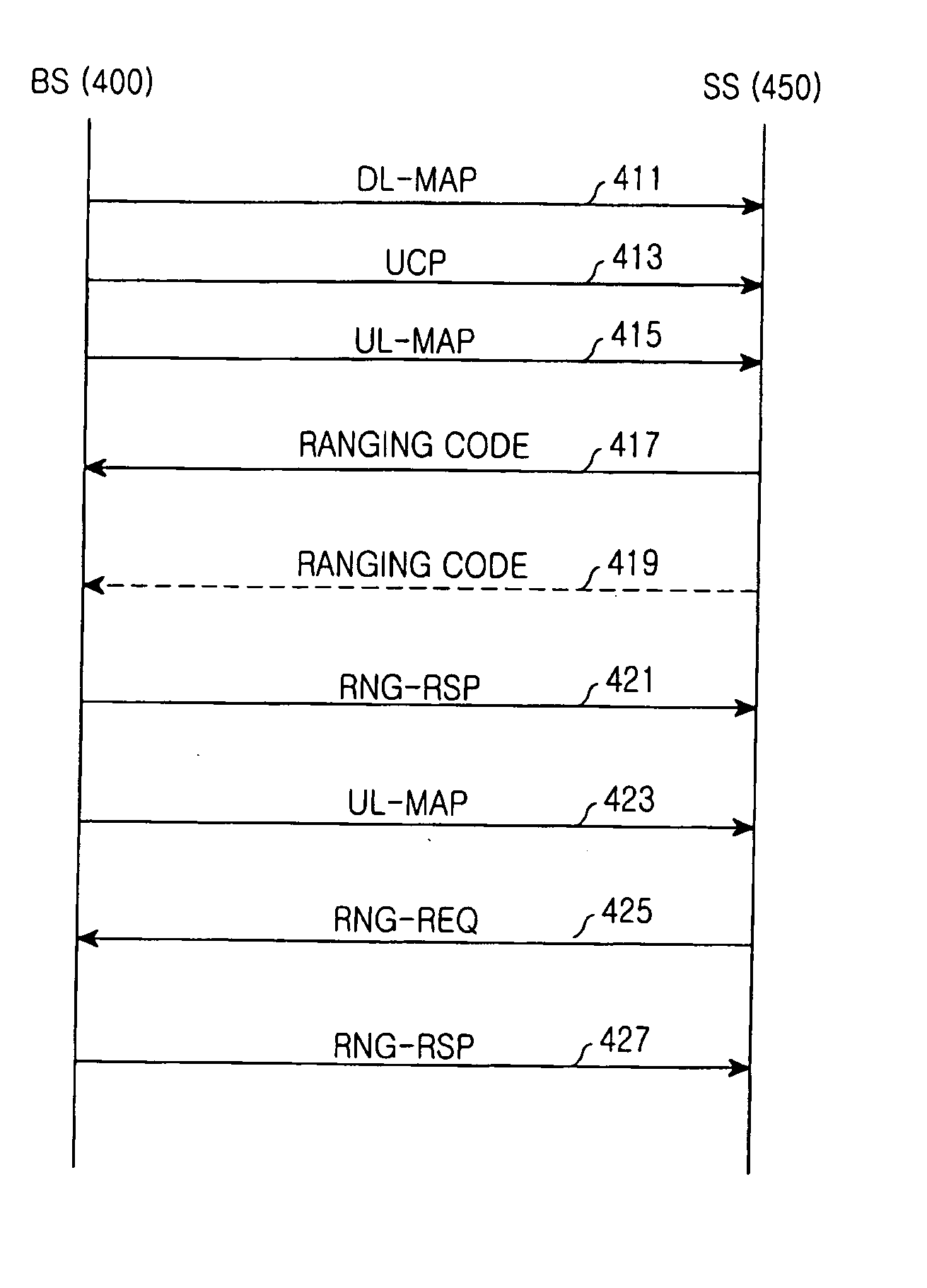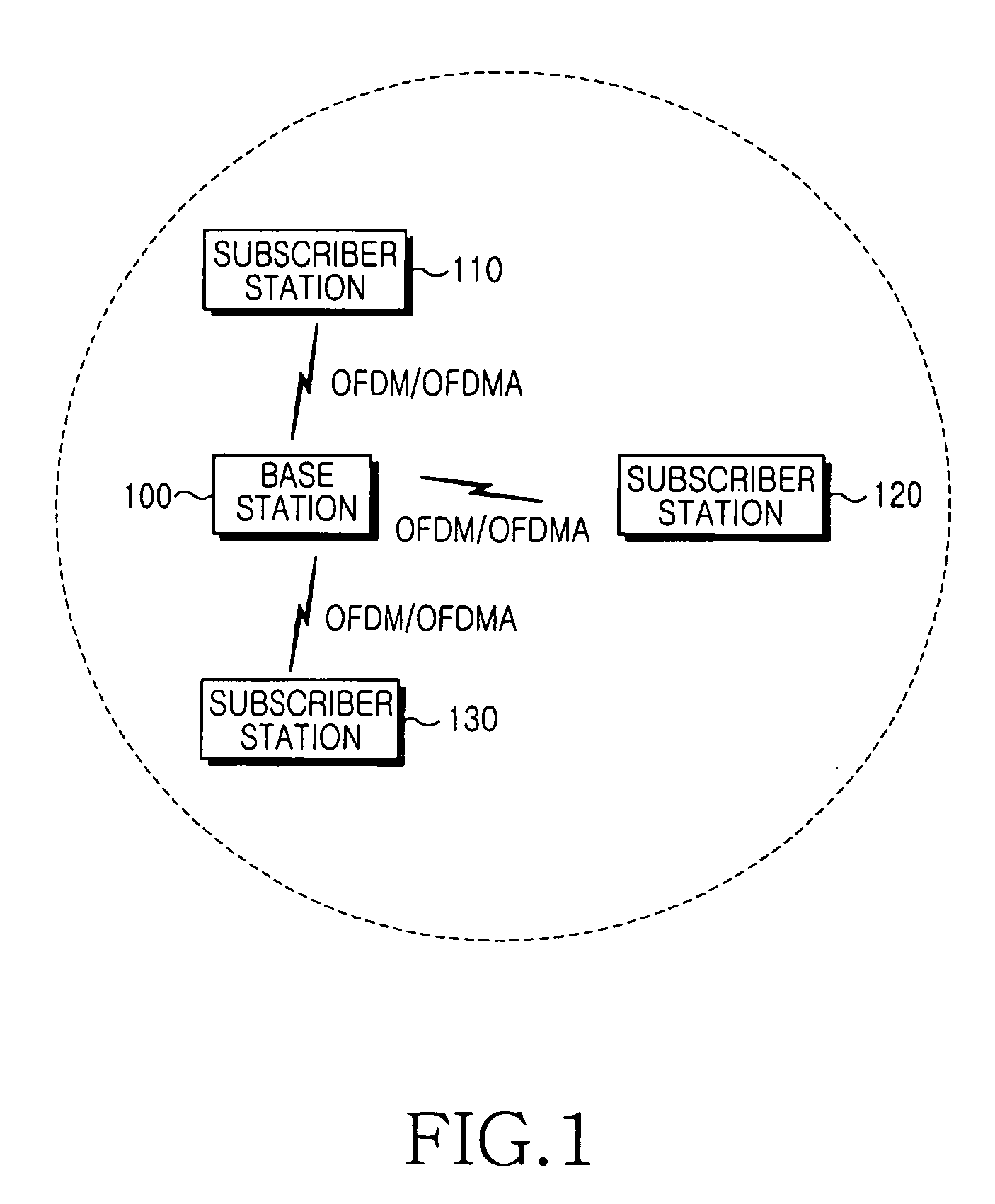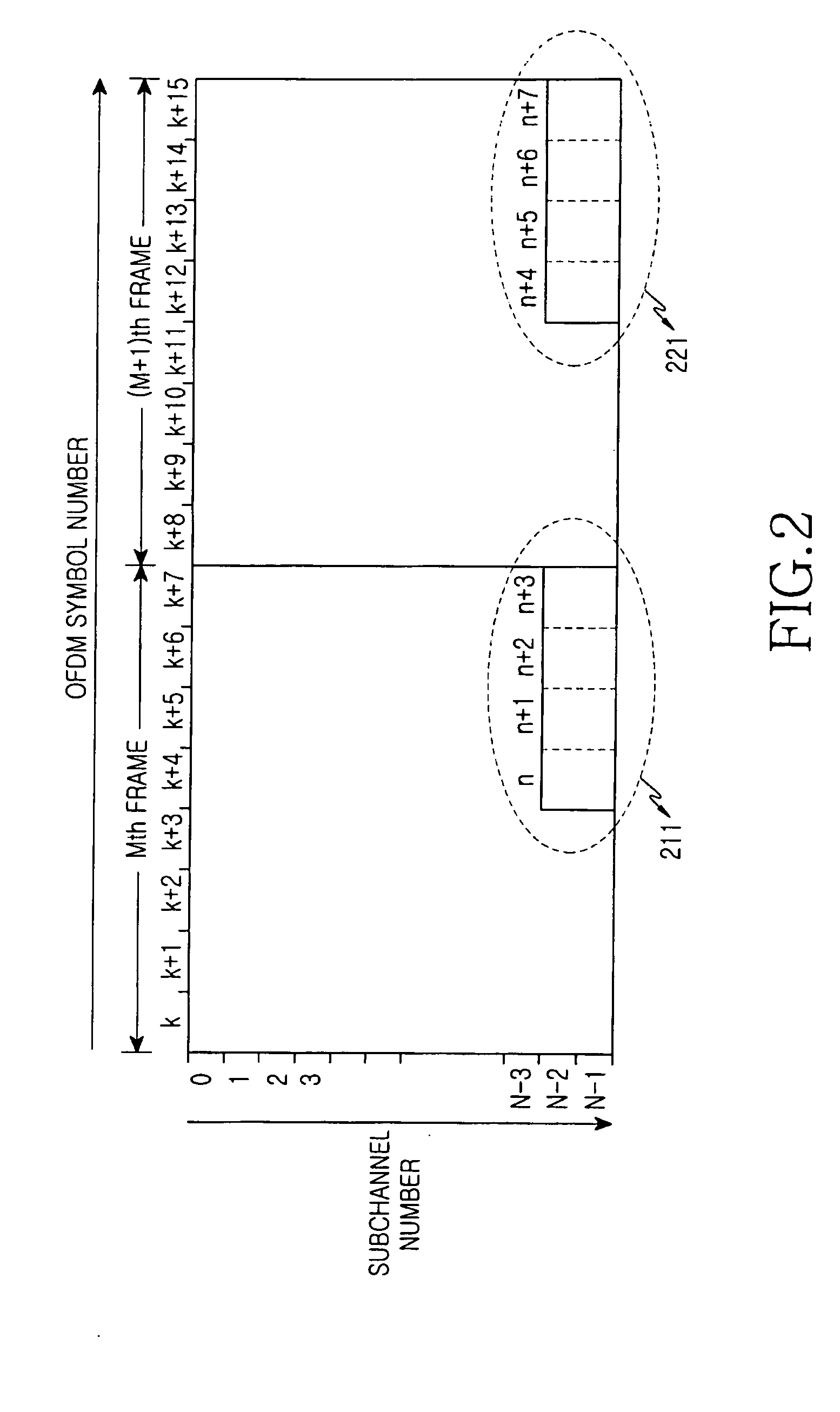Ranging method in a mobile communication system using orthogonal frequency division multiple access
a communication system and orthogonal frequency division technology, applied in orthogonal multiplex, multiplex communication, data switching networks, etc., can solve the problems of frequent occurrence of ranging code collisions, inability to allocate uplink bandwidth, and inability of base stations to distinguish data transmitted by individual subscriber stations, so as to minimize the access delay of subscriber stations, prevent ranging code collision, and minimize the effect of access delay
- Summary
- Abstract
- Description
- Claims
- Application Information
AI Technical Summary
Benefits of technology
Problems solved by technology
Method used
Image
Examples
Embodiment Construction
[0064] A preferred embodiment of the present invention will now be described in detail with reference to the annexed drawings. In the following description, a detailed description of known functions and configurations incorporated herein has been omitted for conciseness.
[0065] The present invention provides a bandwidth request ranging method for preventing ranging code collision while minimizing an access delay in a communication system supporting Orthogonal Frequency Division Multiple Access (OFDMA) technology (hereinafter referred to as “OFDMA communication system”). In addition, the present invention proposes an operational state of a Media Access Control (MAC) layer of a subscriber station (SS) for performing a bandwidth request ranging without the ranging code collision while minimizing an access delay time.
[0066] In the following description, it will be assumed that the OFDMA communication system is identical in configuration to the IEEE 802.16a communication system of FIG. ...
PUM
 Login to View More
Login to View More Abstract
Description
Claims
Application Information
 Login to View More
Login to View More - R&D
- Intellectual Property
- Life Sciences
- Materials
- Tech Scout
- Unparalleled Data Quality
- Higher Quality Content
- 60% Fewer Hallucinations
Browse by: Latest US Patents, China's latest patents, Technical Efficacy Thesaurus, Application Domain, Technology Topic, Popular Technical Reports.
© 2025 PatSnap. All rights reserved.Legal|Privacy policy|Modern Slavery Act Transparency Statement|Sitemap|About US| Contact US: help@patsnap.com



